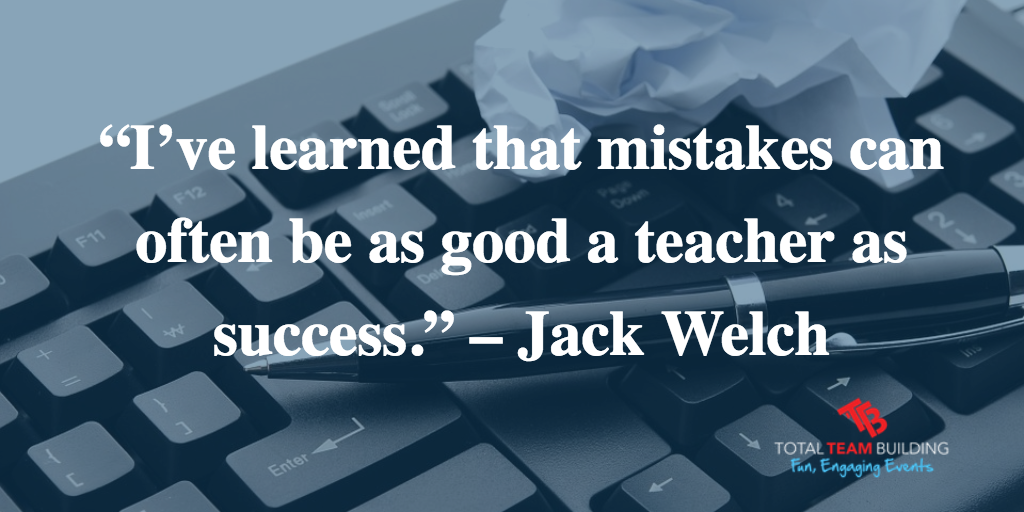Tag Archive for: employees
Should a Leader Allow Employees to Fail in Order to Learn?
in Leadership/by Darren BradyLearning through failure is a tricky topic in business. Arguments can be made for and against this type of learning in a business environment. Let’s take a look at both sides of the coin and see what can be gained or lost from learning through failure, and how to implement a failure-tolerant culture in your business.

What Is The Purpose Of Failure In Business?
Failure is a great teacher. It helps us to see a personal example of what not to do and to learn more quickly than we otherwise would have. In organizations where employees are not allowed to fail at any point, fewer risks are taken and people tend to stay within their comfort zones. In certain industries this may be okay, but in most modern businesses risks are necessary for the company to stay competitive.
If employees are not allowed to make mistakes or to fail at anything, they will be unwilling to try new ways of working that would possibly make the business more competitive.
Advantages & Disadvantages Of Learning Through Failure
These are a few of the ways your business can thrive in a failure-accepting culture and some of the risks of allowing employees to fail.
Advantages
- Experience is a better teacher than words
- Taking risks can turn out amazing results
- Failure opens up other options to find a solution
- Hands-off management encourages employee growth and self-supervision
- Without failures, there can be no meaningful growth
- Risks stretch a person’s comfort zone
Disadvantages
- Failure in certain areas of the business can jeopardise your company
- Mistakes might add up and become costly to the organization
Determining When Failure Is Acceptable
It is the leader’s responsibility to make sure employees cannot cause catastrophic damage to the business when they fail. This means that you will have to limit the areas in which your employees are allowed to take certain types of risks. Big risks shouldn’t ever happen in client relations or general corporate actions without executive leadership being involved to advice and implement.
On the other hand, team projects and individual projects are usually a good place to encourage your team to take some risks and try new strategies to get the work done more effectively. If they fail in these areas, the team will be there to assist in fixing that mistake and finding a new way to accomplish the task.
As a general rule for your team, it’s a good idea not to allow employees to take large risks on projects that could end up causing irreparable damage or being too costly to the company if a mistake did occur. Smaller projects are a great place for risks, as the damages caused are usually fixable and not very costly to the company.
Allowing Employees To Make Mistakes
Although it’s a great idea for leaders to allow learning through failure, there should be some clearly understood guidelines. If you don’t have guidelines laid out for your employees, they may become careless with their risk-taking and make unnecessary mistakes in the course of business as usual. Here are a few pointers about guidelines for learning by failure:
- Don’t tolerate the same mistakes made twice
It’s okay for employees to make mistakes; we now know this. However, you shouldn’t allow employees to make the same mistakes twice. It’s acceptable to make a mistake, but it’s expected that failure should cause that employee to learn and to avoid making that same mistake again. If that learning does not occur, there will be problems in allowing that employee to take risks again.
- Look for employees to learn from, own, and fix their mistakes
Ideally you should encourage this cycle with risk-taking: learn from, own, fix, and safeguard. This means that employees should learn from any mistakes they make, own up to what they did wrong, fix the consequences of their failure, and put in proper safeguards to ensure that mistake does not get repeated. This is a great guideline for employees about the best process for learning through failure.
- Supervision without intervention
As a leader, you will have to learn how to supervise what your employees are doing without stepping in to intervene if you think they are wrong. Again, this applies only to the situations in which risk is acceptable and allowed, not in more risk adverse situations. If your employees come to you for advice on the matter, you can intervene then and show them the problems you have seen. Otherwise, exercise restraint and allow that employee to fail if necessary in order to allow them to learn from their mistakes.
- Encourage risks, allow mistakes
It’s important to differentiate between encouraging mistakes and allowing mistakes. You should make it known that mistakes happen to everyone and are acceptable, but that it is not encouraged to make mistakes. Instead, encourage employees to stretch themselves, try new options, and take risks in their work where it is acceptable. If these actions result in failure, so be it.
Implementing A Failure Policy With Employees
If you want to create an environment where employees are able to learn from their failures, you must be willing to communicate this to them directly. Before people will be willing to stretch themselves and take risks, they have to know it’s acceptable and won’t be punished. Lay out the guidelines you decide on, challenge your employees to take risks, and stay true to your word on your stance about failure in the business.
About Total Team Building
Total Team Building specialise in teams…we facilitate fun and engaging team building activities designed to enhance teamwork, team culture, leadership, communication and collaboration. For more information about how Total Team Building can help you and your learn from failure contact us today.


